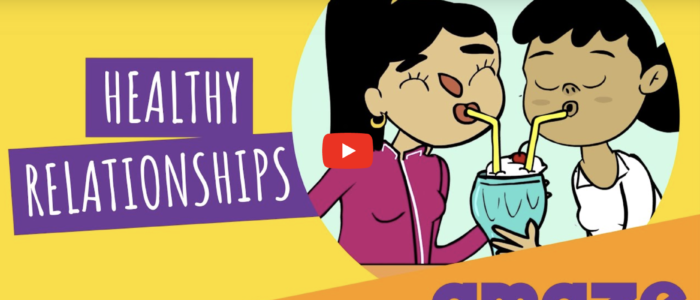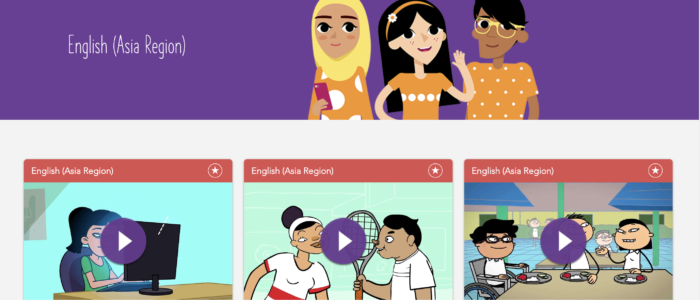Continuing our conversation on Introducing the Important Role of Sex Education, the issues faced by the educators or youth facilitators to discuss puberty and sexuality issues has not stopped by cultural norms challenges. They have to continue learning and adapting on how to open up conversations, especially the sensitive ones, in interactive ways. Using any visual tools – such as videos or images is simpler and quicker to process by our brain. According to the Visual Teaching Alliance, the brain can process visuals more than 60,000 times faster than text. In addition, humans process visual information and emotions in the same part of the brain, hence, visual metaphors and images can create strong impressions in learners, even lasting memories.
AMAZE, digital comprehensive sexuality education (CSE) resources, exists to facilitate very young adolescents in accessing medically accurate and age-appropriate in humorous and fun ways, through 200+ animated videos. Not only the videos, AMAZE has also provided accompanied educational tools, for instance lesson plans and discussion guides, From puberty, personal safety, healthy relationships, sexual transmitted infections – including HIV, sexual violence and abuse, sexual orientation and gender identity, gender norms, contraceptives, to pregnancy and reproduction, AMAZE resources also come with accompanied educational tools (e.g., lesson plans and discussion guides), to assist educators, parents, and health workers in having a more open and honest communication regarding sexualities to adolescents around them.

One of the interesting parts of AMAZE is the contents of educational tools developed by the young people, with the spirit of mainstreaming meaningful and inclusive youth participation. AMAZE Youth Ambassadors – a group of young people aged 10 – 17 years old are providing feedback and suggestions on the topic for AMAZE videos, and whether the contents and animation style are relevant for the youth.
Furthermore, some contents help parents answer their kids’ or toddlers’ big and unique questions about our bodies. AMAZE Junior comes in cartoon-based videos for children, where the animations have been adjusted for toddlers, and another series of animated videos to guide the parents.
As part of my fellowship program, I had the opportunity to work with UNESCO Bangkok Office and UNFPA Asia and the Pacific Regional Office to adapt nine videos under puberty, gender, relationship, sexuality, and sexual health services topic. The topics were chosen through three country consultation meetings in Lao PDR, Thailand, and Viet Nam which engaged 30+ digital sexuality education network members, educators, youth facilitators & peer educators, as well as sexual and reproductive health and rights advocates and students. Participants also provided suggestions for onscreen adaptations to ensure that the content and images were contextually and culturally relevant.
I also had the chance to lead and facilitate 13 youth co-creators across 10 Asia countries, namely Bangladesh, India, Nepal, Bhutan, Viet Nam, Indonesia, Malaysia, Philippines, Hong Kong, and Cambodia, to co-create a set of six discussion guides around internet safety, consent, puberty, sexuality, and intimate partner violence. The accompanied guides are meant to assist by the peer educators or youth facilitators in facilitating discussions and educating young and middle adolescents about sexual and reproductive health in the Asia Pacific Region. Each video discussion guide consists of an introduction to the video’s topic, a video screening, discussion and reflection questions, and an optional activity and quiz. It is indeed a humbling experience to work with young people who have numerous experiences and contribute to raise awareness on these topics.
Check out the AMAZE-ing resources, where you can find them subtitled and/or dubbed in more than 50 languages, and let me know what you think!

References:
1). Why visual learning is important in school. Grove Eye Care. (n.d.). Retrieved January 31, 2023, from https://www.groveeyecare.com/blog/why-visual-learning-is-important-in-school.html
2). AMAZE https://amaze.org/
3). Hero & thumbnail photo by Akela Photography



